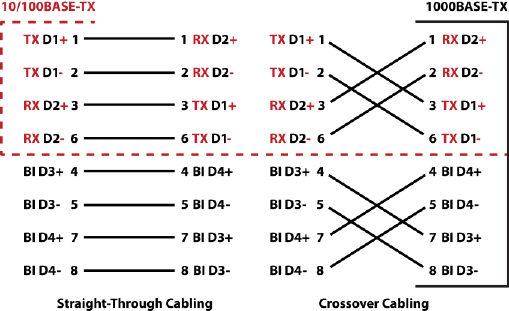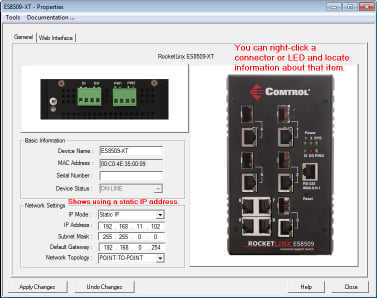-
Connect power to the ES8509-XT.
PW1 and PW2 support power redundancy and polarity reverse protection functions.
Positive and negative power system inputs are both accepted, but PW1 and PW2 must apply the same mode.
If both power inputs are connected, the ES8509-XT will be powered from
the highest connected voltage. The unit will signal an alarm for loss of power in either PW1 or PW2.
![[Note]](images/note.gif) | | Note |
|---|
|
Remember to unplug the power terminal block before making wire connections, otherwise the
screwdriver can inadvertently short the terminal connections to the grounded enclosure. |
|
Insert the wires (12-24 AWG) from the power supply into the terminal block connector contacts.
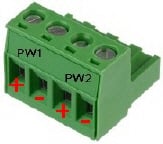
Tighten the wire-clamp screws to prevent the DC wires from becoming loose.
The PW1/PW2 LED turns red during the boot cycle and turns green when the unit is ready.
The recommended working voltage is 24VDC with an input range of 10.5VDC to 60VDC and a maximum power consumption of 24W.
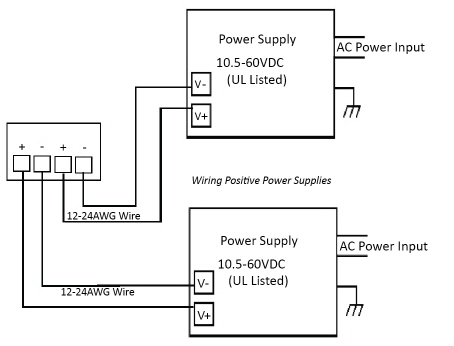
If desired, connect the digital input or relay output.
The ES8509-XT provides one digital input and one digital output (dry relay output)
on the terminal block connector on the bottom of the switch.
The fault conditions can be configured in the web interface and include:
DI State

Dry output
Ethernet port link break
Power failure
Ping failure
Super Ring failure
The Digital Input pin can be pulled high or low so that the connected equipment can actively drive these pins.
The web interface allows you to read and set the value to the connected device. The power input voltage of
logic low is 0 to 10VDC and logic high is 11 to 30VDC. Do not apply a higher voltage than the specification; it may cause
internal circuit damage or a cause an incorrect DI action.
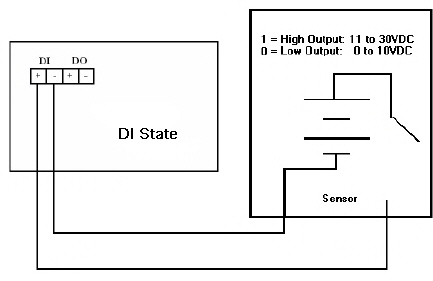
Digital output relay contacts are energized (open) for normal operation and will close for fault conditions.
The digital output relay contacts support up to 1A at 30VDC. Do not apply voltage and current higher than the specifications.
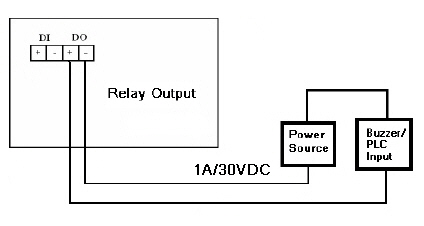
Insert the positive and negative wires (12-24 AWG) into V+ and V-.
Tighten the wire-clamp screws to prevent the wires from coming loose.
Wire the earth ground.
To ensure the system is not damaged by noise or any electrical shock, we suggest that you to make an
exact connection between the ES8509-XT and earth ground. On the bottom side of the ES8509-XT,
there is one earth ground screw. Loosen the earth ground screw with a screw driver; then tighten the screw after the earth
ground wire is connected.
If you are going to mount the ES8509-XT on a grounded DIN rail, you do not need to also connect the ground wire.
Mount the ES8509-XT to the DIN rail using the clip on the back of the unit or use the wall mounting plate.
Follow the steps below to install the ES8509-XT on a DIN rail:
If necessary, use the screws to attach DIN rail clip to the rear panel of the ES8509-XT.
(To remove DIN rail clip, reverse Step 1.)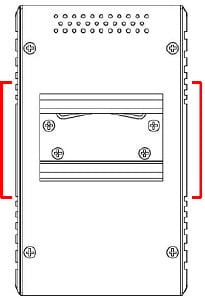
Insert the upper end of DIN rail clip into the back of DIN rail track from its upper side.
Lightly push the bottom of DIN rail clip into the track.
Verify that the DIN rail clip is tightly attached on the track.
To remove the ES8509-XT from the track, reverse the steps above.
Follow the steps below to install the ES8509-XT with the wall mounting plate:
To remove the DIN rail clip from the ES8509-XT, loosen the screws from the DIN rail clip.
Place the wall mounting plate on the rear panel of the ES8509-XT.
Use the screws to attach the wall mounting plate to the ES8509-XT.
Use the hook holes at the corners of the wall mounting plate to hang theES8509-XT onto the wall.
To remove the wall mounting plate, reverse the steps above.
Connect appropriate network cables between the ES8509-XT Gigabit Ethernet ports and the network.
The RJ45 ports support 10/100Mbps half/full-duplex and 1000Mbps full-duplex.
All RJ45 ports auto-detect the signal from connected devices to negotiate the link speed and duplex mode.
Auto MDI/MDIX allows users to connect another switch, hub, or workstation without changing straight-through or crossover cable.
Always make sure that the cables between the switch and attached devices (for example, switch, hub, or workstation)
do not exceed 100 meters (328 feet).
10BASE-T: Category 3, 4, or 5 cable
100BASE-TX: Category 5 cable
1000BASE-TX: Category 5 or 5e cable
Ports 1 through 5 are RJ45/SFP combo ports. The SFP ports support 100/1000Mbps. When
the SFP is active and installed on a combo port, the corresponding combo RJ45 port is
inactivated. For example, if an SFP is installed and active on the SFP1 port, the corresponding
RJ45 Port 1 becomes inactive.
Optionally, connect the SFP transceivers.
Cross-connect the transmit channel at each end to the receive channel at the opposite end.
The SFP socket supports optical fiber communications that can support a 100Mbps and
1000Mbps SFP Transceiver with Digital Diagnostic Monitor (DDM) to achieve fiber signal
quality control. The SFP ports support 100BASE-FX and 1000BASE-SX/LX standard mini-GBIC SFP transceivers.
To ensure system reliability, Pepperl+Fuchs Comtrol, Inc. recommends using
Pepperl+Fuchs Comtrol, Inc. certified SFP Transceivers.
The SFP and corresponding RJ45 ports work in an exclusive mode.
Traffic sent or received through the SFP module will have priority thus no traffic will be sent
or received over the corresponding RJ45 connection. To use the RJ45
connection, remove the corresponding SFP module.
The SFP port does not function until the fiber cable is linked to another active device.
When the SFP module is plugged in and there is no active connection (link) on the fiber, then the Gigabit port will link.
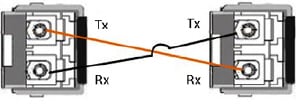
![[Note]](images/note.gif) | | Note |
|---|
This is a Class 1 Laser/LED product. Do not stare at the Laser/LED Beam. |
|
Plug the SFP transceiver into the SFP fiber transceiver.
Connect the transmit channel to the receive channel at each end.
Check the direction/angle of the fiber transceiver and the fiber cable.
Verify that the LEDs display that it is ready to configure the IP address.
The Link/Act LED is lit when the cable is correctly connected.
Configure the IP address using one of the following methods:
The easiest way to configure a static IP address for your network in the ES8509-XT is to use a
Windows host and PortVision DX (see Programming the IP Address).
For information about using other configuration methods,
refer to the RocketLinx ES8509-XT User Guide.







![[Note]](images/note.gif)







